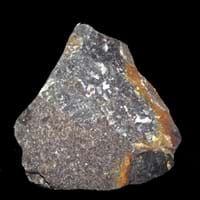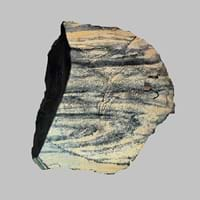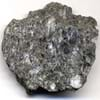Definition
Dolomite is a sedimentary rock containing more than 50 percent of the mineral dolomite by weight
Oil Shale is a fine-grained sedimentary rock from which oil is extracted
Origin
Southern Alps, France
Unknown
Discoverer
Dolomieu
Unknown
Etymology
From French, from the name of Dolomieu (1750–1801), the French geologist who discovered the rock
From Old English scealu in its base sense of thing that divides or separate
Class
Sedimentary Rocks
Sedimentary Rocks
Sub-Class
Durable Rock, Medium Hardness Rock
Durable Rock, Soft Rock
Group
Not Applicable
Not Applicable
Other Categories
Coarse Grained Rock, Fine Grained Rock, Medium Grained Rock, Opaque Rock
Fine Grained Rock, Opaque Rock
Color
Black, Brown, Colourless, Green, Grey, Pink, White
Black, Brown, Buff, Green, Grey, Red, Yellow
Durability
Durable
Durable
Appearance
Glassy or Pearly
Muddy
Interior Uses
Decorative Aggregates, Homes, Interior Decoration
Not Yet Used
Exterior Uses
Garden Decoration, Office Buildings
Not Yet Used
Other Architectural Uses
Not Yet Used
Not Yet Used
Construction Industry
As a Flux in the Production of Steel and Pig Iron, As a Sintering Agent in Steel Industry to process Iron Ore, As Dimension Stone, Cement Manufacture, for Road Aggregate, Making natural cement, Manufacture of Magnesium and Dolomite Refractories, Production of Glass and Ceramics, Serves as an Oil and Gas Reservoir rock
Cement Manufacture, Construction Aggregate, for Road Aggregate, Serves as an Oil and Gas Reservoir rock
Medical Industry
Taken as a Supplement for Calcium or Magnesium
Not Yet Used
Antiquity Uses
Artifacts, Jewellery, Monuments, Sculpture, Small Figurines
Artifacts
Commercial Uses
An Oil and Gas Reservoir, As a Feed Additive for Livestock, Gemstone, Metallurgical Flux, Production of Lime, Soil Conditioner, Source of Magnesia (MgO)
An Oil and Gas Reservoir
Types
Boninite and Jasperoid
Carbonate-rich Shale, Siliceous Shale and Cannel Shale
Features
Host Rock for Lead, Traps for subsurface fluids like Oil and Natural Gas., Zinc and Copper Deposits
Easily splits into thin plates, Generally rough to touch, Is one of the oldest rock, Very fine grained rock
Archaeological Significance
Monuments
Used
Not Yet Used
Famous Monuments
Data Not Available
Not Applicable
Sculpture
Used
Not Yet Used
Famous Sculptures
Data Not Available
Not Applicable
Pictographs
Used
Not Used
Petroglyphs
Used
Not Used
Figurines
Used
Not Yet Used
Formation
Dolomite rocks are originally deposited as calcite or aragonite rich limestone, but during diagenesis process, the calcite or aragonite is transformed into dolomite.
Oil Shale forms on the beds of seas and lakes and its formation starts with the organic debris settling and accumulating at the bottom of a lake or sea which are then transformed into rock with the help of high temperature and pressure.
Mineral Content
Clay Minerals, Pyrite, Quartz, Sulfides
Albite, Biotite, Calcite, Chert, Chlorite, Dolomite, Hematite, Micas, Muscovite or Illite, Pyrite, Quartz, Silica, Sulfides
Compound Content
NaCl, CaO, Carbon Dioxide, Magnesium Carbonate, MgO
Ca, Fe, Mg, Silicon Dioxide, Sodium
Types of Metamorphism
Burial Metamorphism, Cataclastic Metamorphism, Contact Metamorphism
Not Applicable
Types of Weathering
Not Applicable
Biological Weathering, Chemical Weathering, Mechanical Weathering
Types of Erosion
Not Applicable
Chemical Erosion, Sea Erosion, Water Erosion
Grain Size
Medium to Fine Coarse Grained
Very fine-grained
Fracture
Conchoidal
Not Available
Porosity
Less Porous
Highly Porous
Luster
Vitreous and Pearly
Dull
Compressive Strength
Not Available
Specific Gravity
2.8-3
2.2-2.8
Transparency
Transparent to Translucent
Opaque
Density
2.8-2.9 g/cm3
2.4-2.8 g/cm3
Resistance
Heat Resistant, Pressure Resistant, Wear Resistant
Heat Resistant, Impact Resistant
Deposits in Eastern Continents
Asia
China, India
Bangladesh, China, India, Israel, Jordan, Russia, Syria, Thailand, Turkey
Africa
Morocco, Namibia
Ethiopia, Kenya, Morocco, South Africa, Tanzania
Europe
Austria, Italy, Romania, Spain, Switzerland
Austria, France, Germany, Greece, Italy, Romania, Scotland, Spain, Sweden, Switzerland
Others
Not Yet Found
Greenland, Not Yet Found
Deposits in Western Continents
North America
Mexico, USA
Canada, USA
South America
Brazil, Colombia
Bolivia, Brazil, Chile, Colombia, Ecuador, Peru, Venezuela
Deposits in Oceania Continent
Australia
New South Wales, Queensland, Yorke Peninsula
New South Wales, New Zealand, Queensland, Victoria, Western Australia
All about Dolomite and Oil shale Properties
Know all about Dolomite and Oil shale properties here. All properties of rocks are important as they define the type of rock and its application. Dolomite and Oil shale belong to Sedimentary Rocks.Texture of Dolomite is Earthy whereas that of Oil shale is Splintery. Dolomite appears Glassy or Pearly and Oil shale appears Muddy. The luster of Dolomite is vitreous and pearly while that of Oil shale is dull. Dolomite is available in black, brown, colourless, green, grey, pink, white colors whereas Oil shale is available in black, brown, buff, green, grey, red, yellow colors. The commercial uses of Dolomite and Oil shale are an oil and gas reservoir, as a feed additive for livestock, gemstone, metallurgical flux, production of lime, soil conditioner, source of magnesia (mgo).










